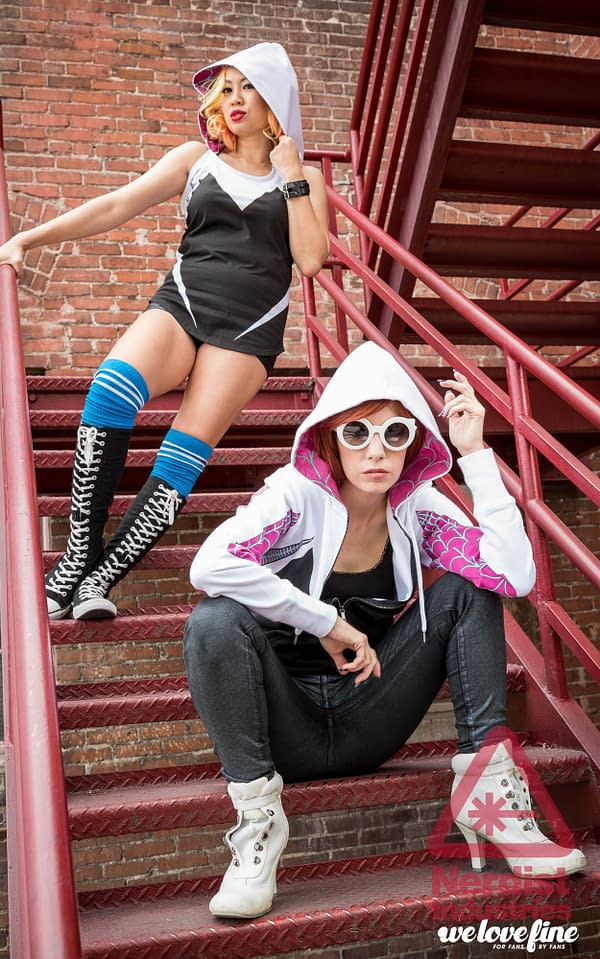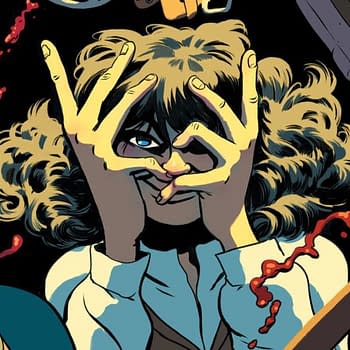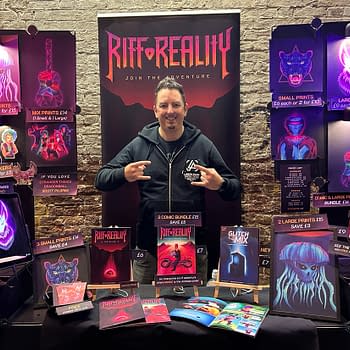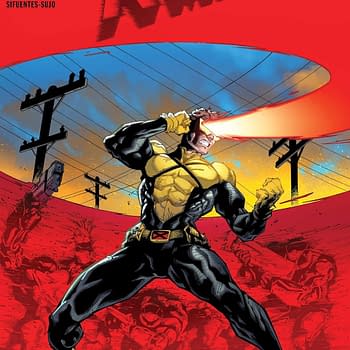Posted in: Comics, NYCC | Tagged: 2016, comic con, Comics, entertainment, new york, new york comic con, NYCC, nycc 2016
Fashion, Comics And The Rise Of Geek Chic At New York Comic Con
NYCC Day 3, I sat through a panel discussing geek fashion and comics, and fashion in comics. I tend to not be too happy after panels like these, but this year NYCC had a surprise in store for me: I actually really, genuinely enjoyed this panel. Hosted by Danielle Colman, and joining her on stage we had Robbie Rodriguez (Spider Gwen), Cameron Stewart (Batgirl of Burnside, Motor Crush), Jen Bartel (Jem and the Holograms), and Adam Withers (The Uniques). As an aspiring artist, I truly enjoyed the conversation, centering mostly on colors, fashion in art/comics, inspiration and resources, and really nice tips from Withers who is now my favorite speaker at a con.
First Colman asked Rodriguez and Stewart what went into the design/redesign of such iconic characters like Spidergwen and Batgirl. Rodriguez said he wanted to try a different take on Spiderman. That coupled with his laziness at the moment and his not wanting to draw all that webbing lead to Spider-Gwen. He stated he was aiming to go as minimalistic as he could. As for Stewart, he stated he wanted to go with something lighter than the dark tone DC Comics had throughout its stories at the time. He wanted to go in a different direction, he said.
When asked, Bartel stated she draws inspiration from K-Pop when bringing the costumes of Jem and the Holograms to life. She followed up by saying they have fantastic fashion designs and styles one does not get to see a lot in Western fashion. She added she also gathers inspiration from stage costumes, like Beyonce's. Bartel also said the publisher offers a lot of creative freedom to her and the team.
Colman then asked Withers what it is like designing for teenagers in The Uniques. He stated that when coming up with designed for characters he first asks himself "who is this person?" He said he likes to find a balance between how the character itself would like to be seen versus how he, as the creator, wants the character to be perceived by the fans. He added he also likes to show the personalities of the kids trying to dress mature but in a more fun perspective.
Shortly after, Colman asked our panelists about their color palettes—how do they use color in their stories. Rodriguez said he wanted to use color as a device, a story-telling element in the story. He added he used pinks and teals to make the design pop. He stated he likes to call this particular genre neon noir—lots of blacks, white, teals, pinks, and yellows. Cameron joined, he told us he grew up with the 60s Batgirl, so those colors: yellow and purple, were Batgirl to him. As for Bartel, she said she likes to use a lot of saturated colors in her work. She admitted it is due to being a long-time fan of Lisa Frank. Colman then asked Withers how it is to use color in a world of gray, to which Withers responded b saying he has a color palette for each character that will represent each character physically but also a trait of them as a person.
The panelists also discussed their process and inspiration behind their fashion designs for their characters and their thought process in making them realistic and useful. Bartel expressed she always had an authentic interest in fashion and urged artists to look at fashion and try different styles. Stewart added: look at people in general. Withers narrowed it down, though: writers have to do research, artists have to do research, too, for the simple matter that art must feel authentic. Bartel also added that having references is helpful, to look at how things work. Withers suggested finding a middle ground, to see what is out there, take references, let yourselves be influenced and mash them up together and see what one can come up with. They also discussed how gender, sexuality , and culture can come into play when designing what a character will wear. The stated it is important to have an understanding of the cultural background of the character one works on. Withers added he usually goes by three rules when pondering over the functionality of whatever a character is wearing: 1) Personality; 2) Simplicity, meaning it should say the most about a character with as little detail; and 3) Utility, everything should be there for a reason- whether functional to a situation or character, or adding personality.
Ale Bodden is a freelance artist and contributing writer for Bleeding Cool and Old Man Geek. You can find her on Twitter @nerdy_faery and IG @nerdyfaery.













